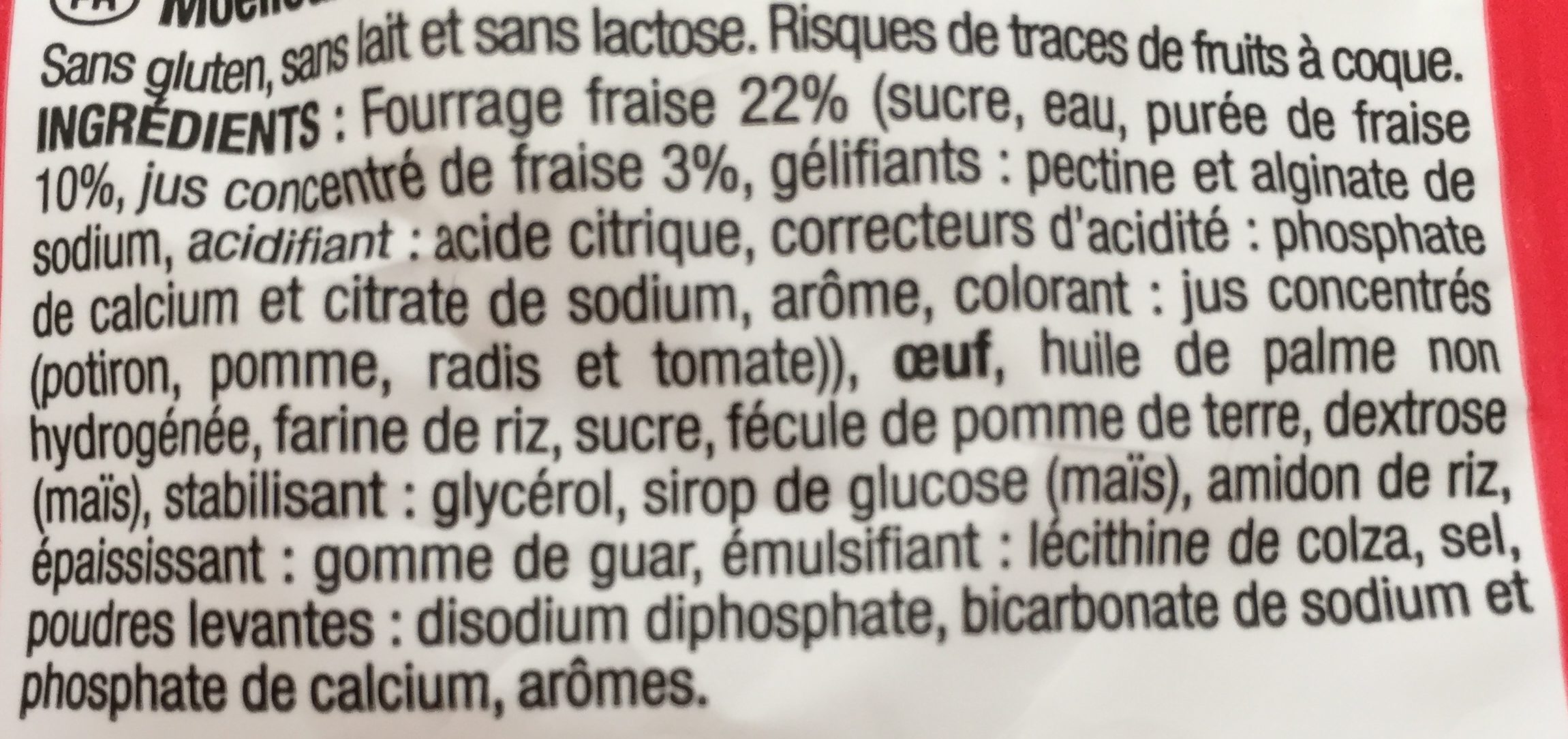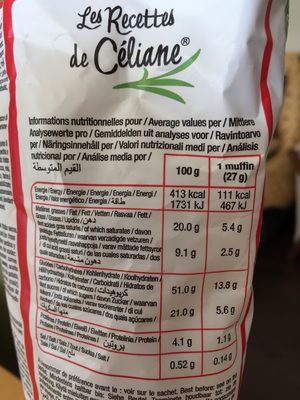Mini mufins sans gluten Fraise - CÉLIANE GLUTEN FREE - 210 g
This product page is not complete. You can help to complete it by editing it and adding more data from the photos we have, or by taking more photos using the app for Android or iPhone/iPad. Thank you!
×
Barcode: 3700566453025 (EAN / EAN-13)
Common name: Moelleux cœur fraise
Quantity: 210 g
Brands: CÉLIANE GLUTEN FREE
Categories: Snacks, Desserts, Sweet snacks, Biscuits and cakes, Cakes
Labels, certifications, awards: No gluten, No lactose, No milk
Countries where sold: France
Matching with your preferences
Environment
Packaging
Transportation
Threatened species
Report a problem
Data sources
Product added on by openfoodfacts-contributors
Last edit of product page on by packbot.
Product page also edited by asmoth, beniben, kiliweb, quechoisir, yuka.ZTZZOVRQeFl0OGd6dDlzbHBneU85ODVjMWJPc0JUTHBkY1FUSVE9PQ.
If the data is incomplete or incorrect, you can complete or correct it by editing this page.










